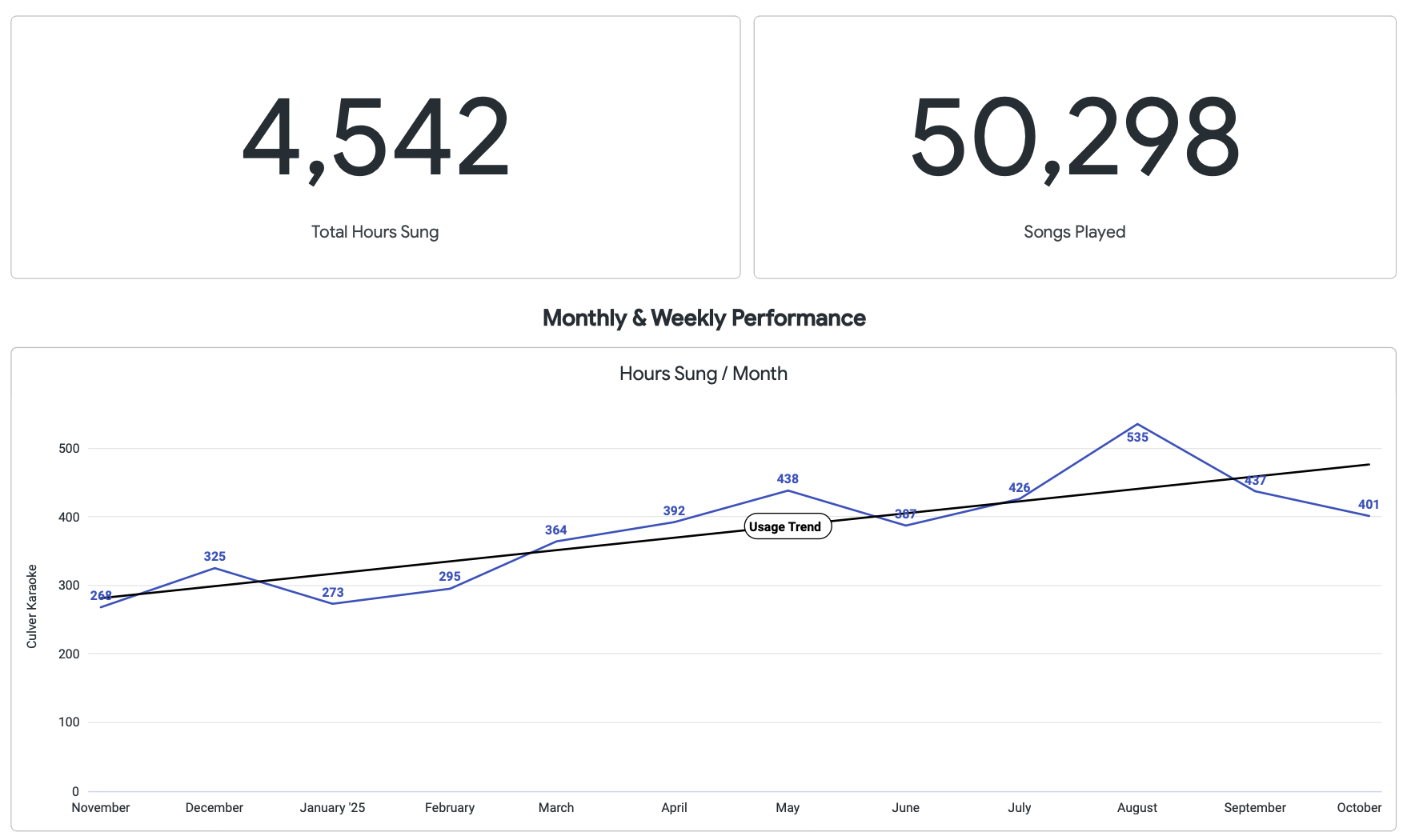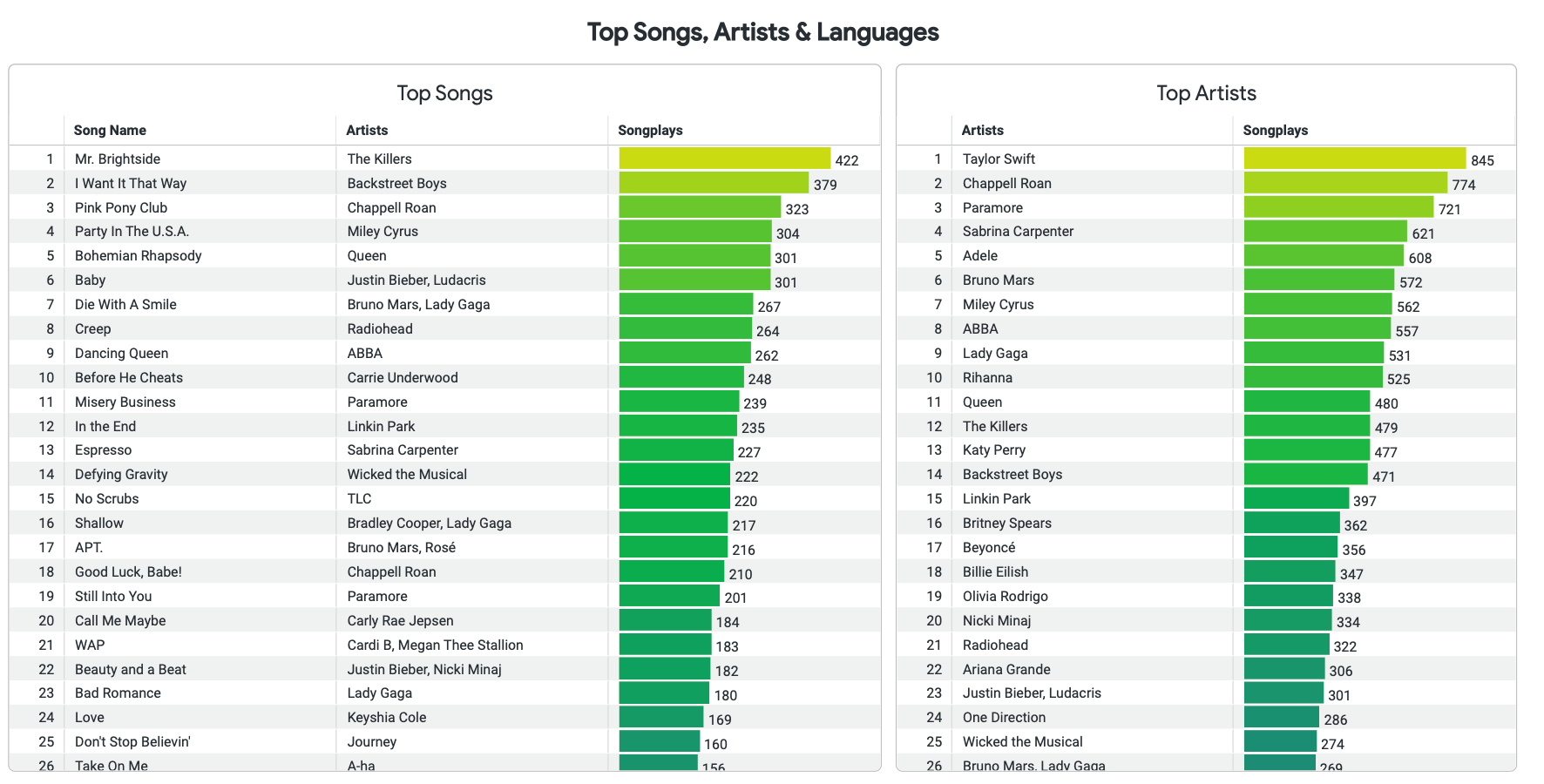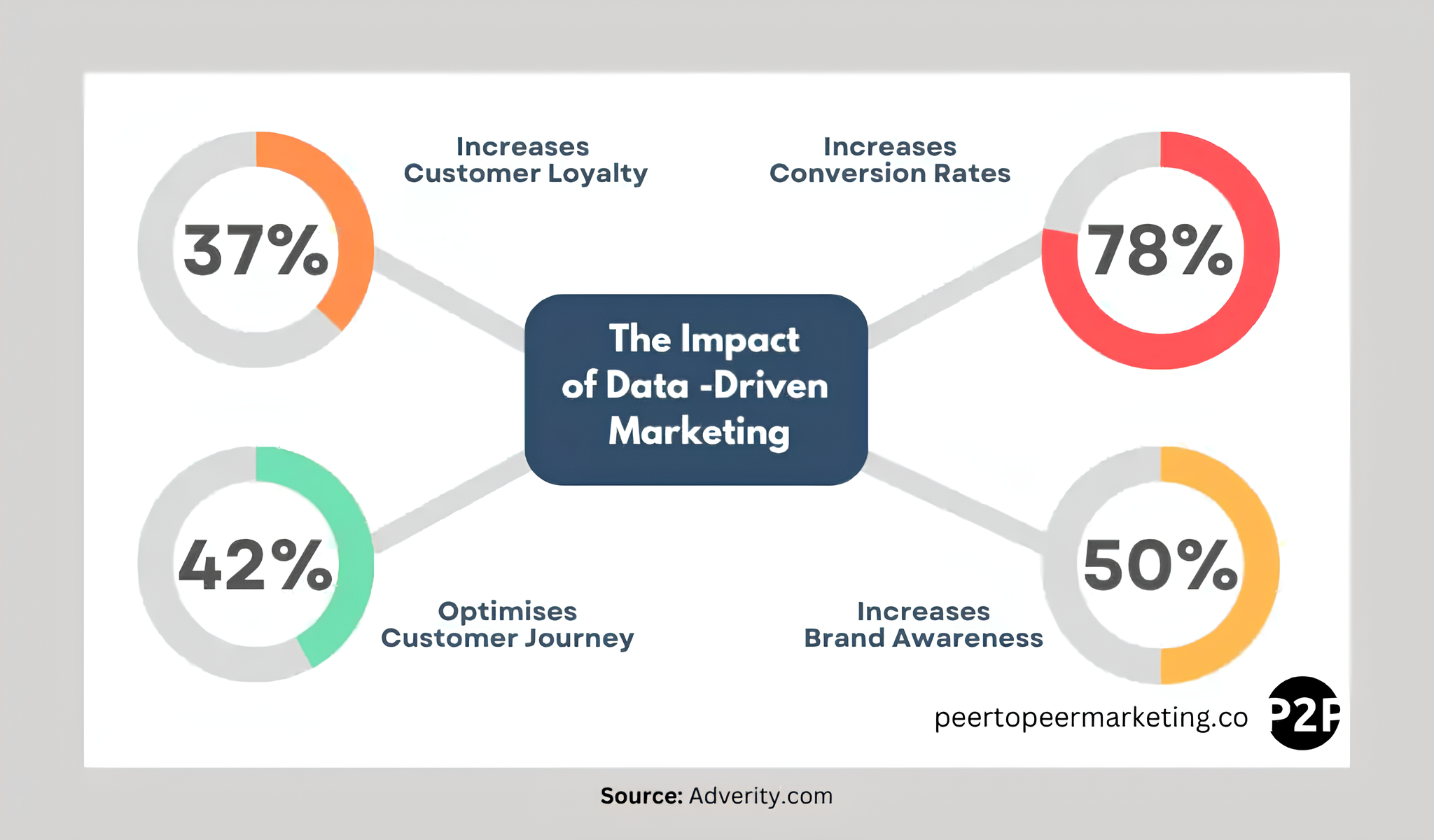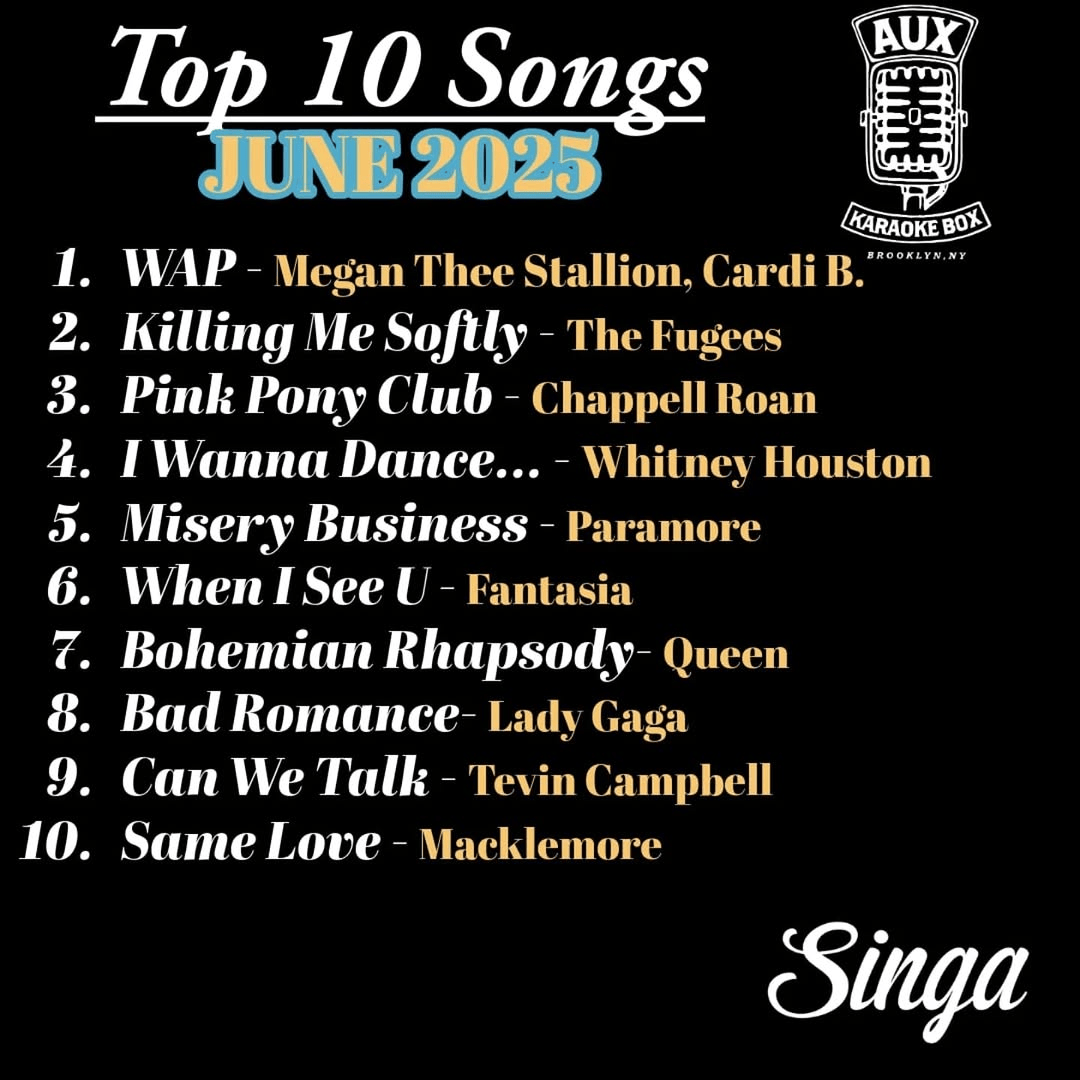Do you know which songs your customers sing the most, or which nights bring in the highest spenders? If not, you could be missing out on valuable insights. Every karaoke session creates a stream of data, and for venues that know how to use it, that data is a goldmine.
By understanding your customers better, you can boost revenue, build loyalty, and optimize your operations. Let’s explore how you can unlock the full potential of karaoke customer data in your venue.
Why customer data matters
Understanding your audience is at the heart of every successful karaoke business, even more so than the right sound system or an uplifting bar menu. When you track customer behavior — whether that's song choices, peak booking times, or repeat visits — you get a clear picture of what drives your business.
Smart operators use these insights to fine-tune their strategy: staffing the right number of team members on busy nights, designing promotions for quieter days, and crafting experiences that keep guests coming back.
With Singa Karaoke Box Mode, venues receive monthly data reports that provide a detailed look at how the rooms perform, giving you a data-driven foundation for every business decision.

What kind of data should you track?
The beauty of karaoke is that every performance gives you clues about your customers. Here are some of the most powerful data points:
- Song popularity: which tracks, genres, or artists are trending in your venue. Are customers belting out Taylor Swift or gravitating toward classic rock? Understanding these preferences helps you curate better experiences.
- Demographics: what your most common age groups or party sizes are. This information shapes everything from your playlist selection to your marketing messages.
- Booking patterns: identify your peak days, seasonal surges, and event-driven spikes. Knowing when your venue fills up — and when it doesn't — is crucial for strategic planning.
- Revenue drivers: what customers are ordering while they sing. Connections between song choices and spending habits can reveal valuable opportunities.
- Repeat visits: who your regulars are, and how often they return. Identifying your most loyal customers allows you to reward them and understand what keeps them coming back.
Wouldn’t it be helpful to know which songs bring guests back for round two, or which weekday is one promotion away from being profitable?

How to turn karaoke data into business results
Collecting data is only the first step. The real power lies in turning it into action. Here's how successful venues put their karaoke data to work.
1. Compare month-to-month performance
Review your monthly data reports to identify trends and patterns over time. Are your November bookings up 20% compared to October? Did a particular promotion drive more repeat customers? Month-to-month comparisons help you understand what's working and where there's room for improvement, allowing you to refine your strategy continuously.
For example, if December shows a surge in group bookings while January dips, plan ahead with themed events or “New Year recovery” deals to keep momentum going.
2. Use song trends to inspire themed events
Use song trends to update playlists and launch themed nights. For instance, if your most popular songs are 90s hits, promote a throwback karaoke night.
A study by Technomic reported that bars and restaurants hosting weekly events, including theme nights, saw up to a 20% increase in mid-week traffic.
3. Prepare for busy seasons
Data helps you forecast and prepare. If your reports show that bookings surge during the holiday season or around major events, you can staff appropriately, stock inventory, and even implement dynamic pricing strategies.
Being prepared ensures you’ll deliver excellent service when it matters most and capture maximum revenue during high-demand periods.
4. Boost bookings on slow nights
Spot slow nights and create promotions to fill the gap. If your data shows that Tuesdays and Wednesdays see fewer bookings, offer discounted karaoke room rates or special package deals on these nights. This approach helps you maximize revenue across the entire week rather than relying solely on weekend crowds.
5. Increase average spend per visit
Pair food and drink offers with karaoke sessions to increase spend per head. Bundle cocktails with private room packages or create signature drinks named after popular songs in your venue.
6. Turn top songs into social media content
Song data can shape your brand personality. Highlight top tracks on social media with posts like “Top 10 songs of the month at AUX Karaoke Bar” or “Most sung artists of the season.” This sparks engagement and gives your audience a sense of belonging — they’re part of your venue’s culture.
7. Personalize your marketing
Knowing who your customers are and what they sing lets you personalize your marketing. When you know someone's favorite genre or that they always book on Friday nights, you can send them relevant offers that feel personal, not generic.
72% of consumers say they only engage with marketing messages that are customized to their interests.

Small adjustments like these can add up to big changes in your bottom line.
Real-world example: AUX Karaoke Bar
AUX karaoke bar demonstrates exactly how to leverage karaoke data for business growth. They use their Singa Box Mode usage reports to identify top-performing songs, peak nights, and audience trends.
Instead of keeping the insights behind the scenes, they share them creatively — posting “most-sung” charts on Instagram and using that content to connect with their followers.

Beyond social media, AUX uses their data strategically:
- They promote artists popular among their guests whenever those musicians have concerts nearby, creating local buzz and cross-promotion opportunities. This positions them as more than just a karaoke bar; they're a hub for music lovers.
- They identify low-activity days from month-to-month reports and offer targeted deals, such as room discounts or drink bundles, to boost midweek traffic.
As a result, AUX builds stronger community engagement, maximizes bookings, and keeps their karaoke experience relevant and data-driven all year round.
Let customer data take the mic
Customer data is the hidden goldmine of karaoke venues. When you start tracking and acting on it, you unlock new opportunities for revenue, operational efficiency, and customer loyalty.
Whether it’s identifying your next themed night, planning for the busy season, or creating shareable song content, karaoke data helps you stay one step ahead.
Want to see how your karaoke venue can unlock its full potential? Learn more about Singa Business.
And for more industry insights and practical tips, check out the Singa Blog.

